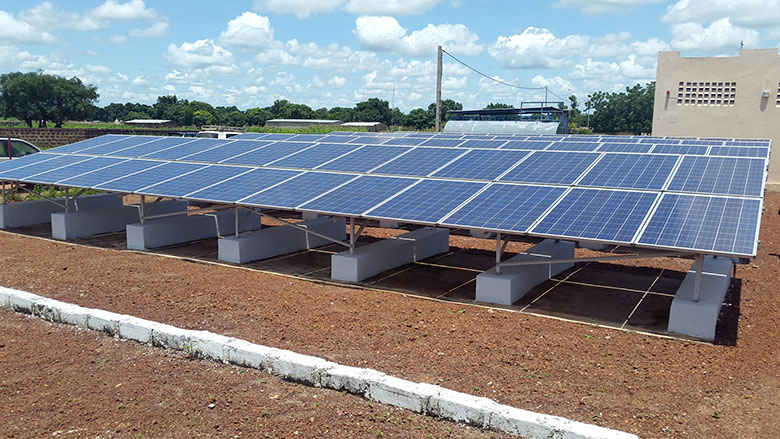Africa’s Energy Burden
July 24, 2018 | Expert Insights

According to a new report, many governments in developed countries who are moving away from fossil fuel consumption have been promoting similar energy projects in African nations.
Background
Africa is the world's second largest and second most-populous continent after Asia. It is surrounded by the Mediterranean Sea, the Isthmus of Suez, the Red Sea, the Indian Ocean and the Atlantic Ocean. It contains 54 fully recognised sovereign states and several archipelagos. Africa hosts a large diversity of ethnicities, cultures and languages. The term Africa originates from the Western usage ‘Africa terra’, which means the land of the Afri, a tribe living in the northern part of Tunisia.
Africa has 16 per cent of the global population, but consumes only 3.3 per cent of its primary energy. Only 24% of sub-Saharan Africans have access to electricity and the energy generation capacity of the continent is only 28 Gigawatts. Energy is a very expensive business in Africa. The commercial sector has been forced to use costly generators to make up for the gap in energy supply. Since energy is crucial for economic development and directly related to GDP per capita, clean and affordable energy is one of the 17 Sustainable Development Goals (SDGs).
The irony of Africa’s energy poverty is that Africa is actually very rich in energy resources but most of the potential generation capacity of 10 terawatts of the region is untapped. Its renewable sources of energy are very diverse, unevenly distributed and enormous in quantity. It is estimated that by 2040 more than 25% or Africa’s total energy will come a variety of clean sources – geothermal, hydro, solar and wind.
Analysis
Every year nearly $20 billion from government-backed financial institutions across the world is diverted to energy projects in Africa. According to reports by Oil Change International, a clean energy advocacy group, almost 60 percent of this amount was pledged for fossil fuel development as compared to 18 percent for renewable energy projects between 2014 and 2016. The report titled “Assessing International Public Finance for Energy in Africa: Where Do Development and Climate Priorities Stand?” examines financial flows from development, export credit agencies and major development banks to energy in Africa. It assesses the main providers of finance, the types of energy supported and the volumes of finance going to different African countries.
It was found that China provided the most funds - an average of over $5 billion per year, of which three quarters supported oil and gas extraction, and 13 percent supported coal-fired power generation. The next-largest suppliers were the World Bank Group, Japan, and Germany. The investment was skewed to three countries – Egypt, Angola, and South Africa – who received nearly half of the finance.
While analysis shows that renewable energy solutions mini-grids or off-grid solar can play a key role in delivering electricity and other energy services to millions of people in Africa, less than 2 percent of the total finance was distributed to support the initiatives. Alex Doukas, Director of the Stop Funding Fossils program at Oil Change International stated: “Government-backed finance for energy in Africa mostly supports fossil fuel projects, while only a very small amount supports solutions like mini-grid and off grid technologies that have an important role to play in delivering on the promise of universal energy access.”
“When deciding on energy projects in Africa, the most important question should be: is this project in the best long-term interests of the people? Governments should improve transparency around contracts, financing terms and energy planning, and engage in more meaningful dialogue with civil society to address this question,” said Thuli Makama, Senior Advisor for Africa at Oil Change International.
Counterpoint
While the World Bank Group has welcomed efforts to quantify public finance for energy in Africa, it has disputed the estimates. A spokesman from the group stated: “The World Bank is committed to helping countries improve access to affordable, reliable and sustainable energy in Africa and in other regions.”
The group claimed that it had exceeded the climate finance target set for 2020 while financing 25% of all the solar mini-grid projects in developing countries, mainly in Africa and South Asia.
Assessment
Our assessment is that much of the bilateral public finance in Africa appears to support the commercial interests of the countries providing the finance. We believe that this is because a third of the finance comes from export credit agencies, which aim to support home country companies to secure overseas business. We also feel that this trend extends to some part of the development finance. We also believe that wealthier countries have a responsibility to support the energy transition in Africa - both at a governmental and community level.








Comments